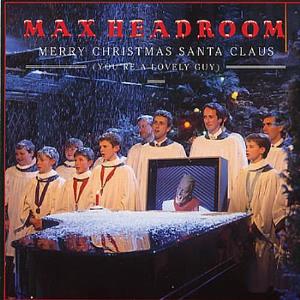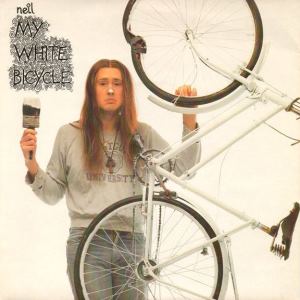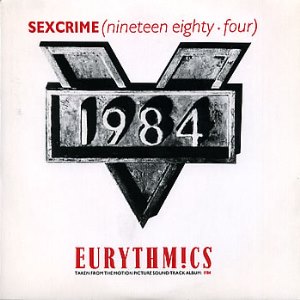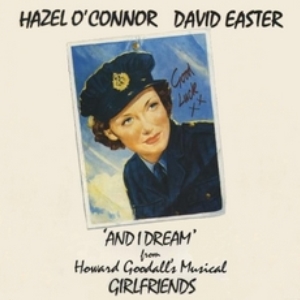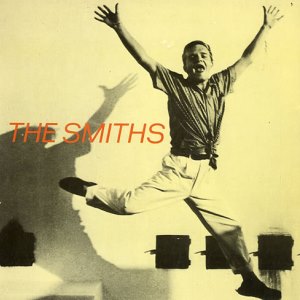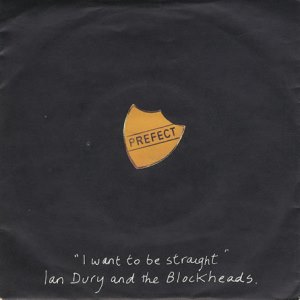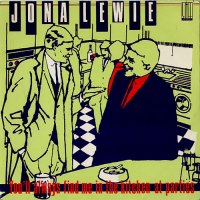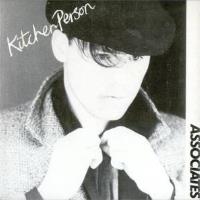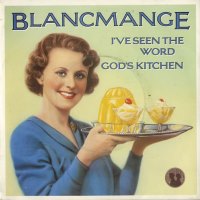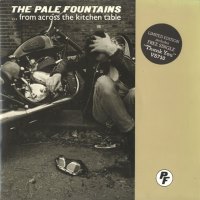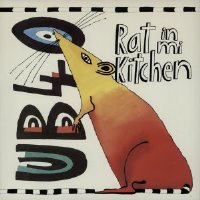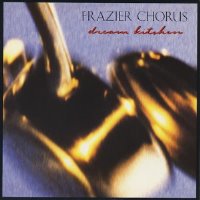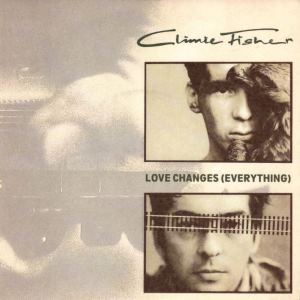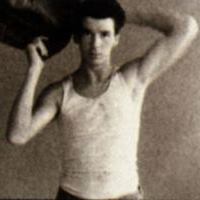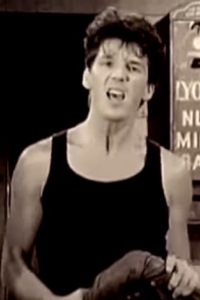
BBC Records & Tapes RESL204
This single was the result of a plot point in the BBC soap opera ‘EastEnders’.
Nick Berry’s character, Simon Wicks, forms a band (‘The Banned’) with some friends.

An argument breaks out when they can’t decide whose song to perform in a competition – Simon’s song,
Something Outa Nothing, or one by Harry Reynolds (played by Gareth Potter) – who owns most of the instruments they play. When the others side with Harry, Simon leaves and writes a ballad
Every Loser Wins for a solo career, but he gives up his musical ambitions soon after.
Every Loser Wins and Something Outa Nothing were actually co-written by Stewart and Bradley James and ‘EastEnders’ theme tune composer Simon May. Berry’s studio recording of the former was one of three official BBC singles tied in with ‘EastEnders’ during 1986; in the original press release the BBC confidently predicted that “with full BBC TV and radio support this is definitely a top ten hit.” In fact it went to #1, and so pleased were the BBC with its success that they commissioned a whole album from him (Nick Berry, REB618, 3 December 1986), released just in time for the Christmas market. “I have enjoyed working on my first album with Mike [Batt] and I am very happy with our choice of tracks. I am keeping my fingers crossed that the album will be as big a hit as Every Loser Wins,” he said, but like his character Wicksy, Berry soon gave up any musical dreams.
Several of Berry’s co-stars also released singles in the same year. In fact, eight of the original 23 contract actors for the show (Berry himself joined some nine months into the series) were featured on 45rpm recordings…
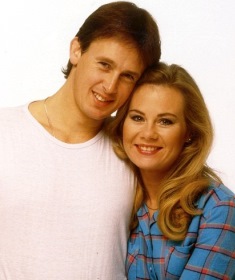 Actor/artist: Ross Davidson
Actor/artist: Ross Davidson
EastEnders role: Andy O’Brien
First appearance: 21 March 1985
Exit: 14 August 1986
Single: Jigsaw Puzzle
Label: Spartan
Catalogue number: SP140
Release date: November 1986
Highest chart position: –
Writers and producers Stewart and Bradley James were hired as the ‘musical directors’ for the album EastEnders Sing-along (BBC Records & Tapes REB586, 11 November 1985), a kind of Music Hall collection in which most of the current cast of the show sang medleys of songs traditionally popular around the old pub piano (Roll Out The Barrell and the like). They suggested to Ross Davidson that he make a record with his real-life partner and co-star Shirley Cheriton (Debbie Wilkins); she declined so instead it was decided to cut a solo single. ‘EastEnders’ producer Julia Smith was very unhappy about this but Davidson defied her, telling him she could kill his character off if she wasn’t happy. So she did: Andy O’Brien was the second original character to be permanently written out and the first one to be killed off.
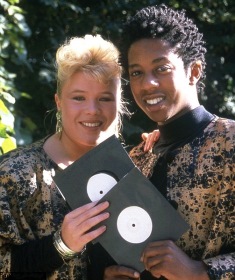 Actor/artist: Letitia Dean
Actor/artist: Letitia Dean
EastEnders role: Sharon Watts
First appearance: 19 February 1985
Exit: 6 July 1995
(returned in 2000)
Single: Something Outa Nothing
Label: BBC Records & Tapes
Catalogue number: RESL203
Release date: 13 October 1986
Highest chart position: 12
This single – a duet between Letitia Dean and Paul J Medford – was promoted at the EMI sales conference in September 1986 as being by The Banned, the group featured in the storyline described above. In the end it was released under the names of the two actors.
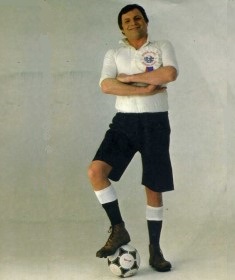 Actor/artist: Peter Dean
Actor/artist: Peter Dean
EastEnders role: Pete Beale
First appearance: 19 February 1985
Exit: 13 May 1993
Single: Can’t Get A Ticket For The World Cup
Label: CBS
Catalogue number: A7150
Release date: 19 May 1986
Highest chart position: –
Novelty record released to coincide with the Mexico world cup. Record Mirror (31 May 1986) asked Dean about England’s prospects: “I must admit I wouldn’t take Bryan Robson. I think his inclusion is a bit of an old pals act. He’s a great player but he’s not 100% fit. [Peter] Shilton is a great goalkeeper but I’d like to see [Ray] Clemence of Tottenham out there. [Glenn] Hoddle can make or break a game but I don’t think he can handle the problems of the attitude. I don’t think he’s a 90-minute player. [Gary] Lineker has got to prove himself. [He did. He was the tournament’s top goal-scorer.] It’s all very well being the best in the league but he’s got his work cut out against world-class defenders. I like [Mark] Hateley; I liked his dad even more. I like those old-fashioned centre-forwards.” Of the eventual winning team, he said Diego “Maradona of Argentina is a complete genius. I think he can walk on water. What he can do with a ball, Paul Daniels couldn’t do.”
 Actor/artist: Anita Dobson
Actor/artist: Anita Dobson
EastEnders role: Angie Watts
First appearance: 19 February 1985
Exit: 19 May 1988
Single: Anyone Can Fall In Love
Label: BBC Records & Tapes
Catalogue number: RESL191
Release date: 28 July 1986
Highest chart position: 4
The official vocal version of the ‘EastEnders’ theme tune, performed by the actress playing one of the most popular characters. It sold 20,000 copies in the first four days following its release alone. Dobson used this opportunity to launch a brief recording career, but this lasted barely longer than her tenure on the show. Nevertheless, she was the only cast member to issue a follow-up in 1986: On My Own appeared as a single on the Fanfare label (FAN9, 24 November 86) and was also the title of her debut album (Telstar STAR2277).
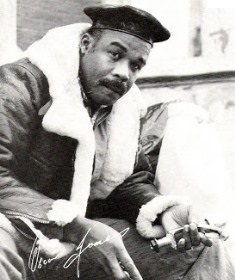 Actor/artist: Oscar James
Actor/artist: Oscar James
EastEnders role: Tony Carpenter
First appearance: 28 February 1985
Exit: 28 May 1987
Single: Love Riding High
Label: 10 Records
Catalogue number: TEN166
Release date: 10 November 1986
Highest chart position: –
In the issue for the week ending 15 November 1986, so fed up had they become with ‘EastEnders’ stars making records that a No.1 coverline declared: “Guaranteed: No E***E**ERS in THIS ISSUE” – although this turned out to be a lie, as Oscar James’ new single was reviewed inside. Despite press adverts declaring that Love Riding High was his debut, James had in fact been recording for over twenty years, with early singles appearing on the Carnival label.
 Actor/artist: Paul Medford
Actor/artist: Paul Medford
EastEnders role: Kelvin Carpenter
First appearance: 12 March 1985
Exit: 3 September 1987
Single: see details under Letitia DEAN above.
Paul J Medford must have been happy to record this single for ‘EastEnders’ as he wanted to sing professionally, this being the reason he eventually left the show. He went on to concentrate of developing his high baritone singing voice and his dancing ability and ever since has been in demand for musical productions, starring in several West End shows.
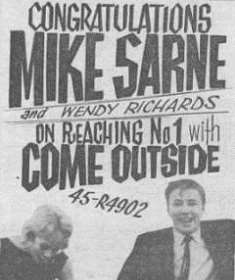 Actor/artist: Wendy Richard
Actor/artist: Wendy Richard
EastEnders role: Pauline Fowler
First appearance: 19 February 1985
Exit: 25 December 2006
Single: Come Outside
Label: WEA
Catalogue number: YZ91
Release date: 17 November 1986
Highest chart position: 96
Richard had previously recorded this song with Mike Sarne in 1962 (Parlophone R4902) and it went to #1. For this re-recording, she teamed up with Mike Berry, her co-star in the sitcom ‘Are You Being Served?’, but as shown it didn’t do quite as well second time around. She also recorded a single called We Had A Dream in 1963. Richard made a point about the spelling of her name with the title of her 2000 autobiography, No ‘S’ My Life Story.
 Actor/artist: Tom Watt
Actor/artist: Tom Watt
EastEnders role: Lofty Holloway
First appearance: 26 February 1985
Exit: 19 April 1988
Single: Subterranean Homesick Blues
Label: Watt The Duck
Catalogue number: DUCK1
Release date: 27 May 1986
Highest chart position: –
This cover of the Bob Dylan song was the sole release on Tom Watt’s own record label, Watt The Duck. Courtesy of his label, Watt also contributed to a charity single called Live-In World, recorded under the ensemble name The Anti-Heroin Project, in 1986, which also featured Holly Johnson, Nik Kershaw,Hazel O’Connor,Sinitta and Kim Wilde among others.
NEW SINGLES on sale from Sep. 22
1980
Kate BUSH Army Dreamers (EMI EMI5106)
1986
A-HA I’ve Been Losing You (Warner Bros W8594)
Nick BERRY Every Loser Wins (BBC RESL204)
The HOUSEMARTINS Think For A Minute (Go! Discs GOD13)
Billy IDOL To Be A Lover (Chrysalis IDOL8)
Howard JONES All I Want (WEA HOW10)
MADONNA True Blue (Re-mix) (Sire W8850
PET SHOP BOYS Suburbia (Parlophone R6140)
PRETENDERS Don’t Get Me Wrong (WEA YZ88)
SHARPE AND NUMAN (Gary Numan)New Thing From London Town (Numa NU19)
Paul YOUNG Wonderland (CBS YOUNG1)
